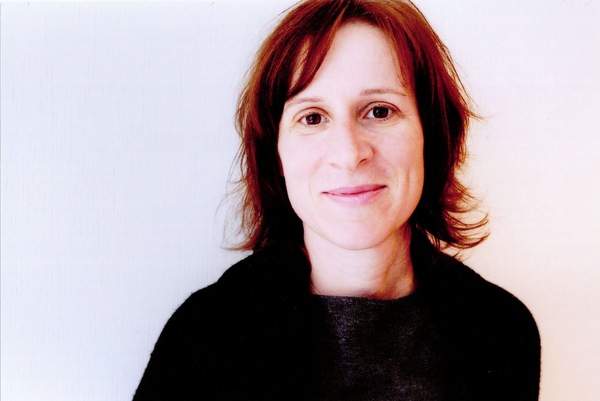For Kelly Reichardt, her cross-country roadtrips inform her creative process by Amy Dawes
The films made by Kelly Reichardt, with their wide-open sonic spaces, piercing landscapes, vivid character encounters and sense of menacing exposure to the elements—settle into your soul like a road trip experience in itself. So it makes sense to learn that long jaunts across the country have been key to her creative process—not just on her new film Certain Women, but for most of her haunting oeuvre.
This habitual criss-crossing of highways has served partly to maintain a life split between New York City, where she teaches, and Portland, Ore., where she feels creatively at home, and partly to indulge in the hands-on location scouting that all but consumes her during pre-production.
“There are always months and months of me driving, either with my dog, or with a location scout or one of my producers,” she says. “And it really informs what you come up with. You run into things you didn’t expect, or solve pieces of the puzzle. If nothing else, it takes you away from your life, and your mind is free to think about your story.”
Her standout works Old Joy, Wendy and Lucy and Meek’s Cutoff were shot around Oregon, where writer Jonathan Raymond, a frequent collaborator, lives and locates his tales. When Reichardt switched focus to Montana for her new film, Certain Women, based on short stories by Maile Meloy, the banal décor she encountered at restaurants and hotels along the road wound up having a significant impact.
“I’ve been driving through Montana for years, and when I started to think about shooting there, the first thing that stood out for me was how you see Native American art referenced everywhere, but without any texture or soul to it,” reflects Reichardt. “It’s an antiseptic version of Native images. And meanwhile around you there are no brown faces—it’s all white. It’s so bizarre how we chose to repurpose the culture [as decoration] but throw away the people.”
Kristen Stewart, director Kelly Reichardt & Lily Gladstone from #CertainWomen. Watch 3 clips https://t.co/MvU5EeZYQJ pic.twitter.com/ojYv4eiqVY
— The Playlist (@ThePlaylist) September 13, 2016
The new film stars Laura Dern, Michelle Williams and Kristen Stewart in a trilogy of loosely connected tales about women struggling to survive in a harsh, indifferent environment. Reichardt saw keen parallels between the clumsy co-optation of Native culture and, in one of Meloy’s stories, a somewhat hollow attempt by upscale home builder Gina (Williams) to bring authenticity to a country home by muscling a load of indigenous local sandstone out of a confused old man (René Auberjonois). “I ended up swapping the middle story I was using for the one that’s there now, which was a breakthrough,” says the filmmaker.
She admits that her quest for the exact right location can become borderline obsessive. For Wendy and Lucy, which stars Williams as a penniless traveler who becomes separated from her dog while on the road, Raymond had set significant scenes in a Walgreens parking lot on the same block as his house in Portland. “I thought, ‘I’m not shooting there—that’s so lazy,'” says Reichardt. “I went to 39 states scouting Walgreens parking lots. Finally, I called Todd Haynes [a mentor and producer on several of her films] and said, ‘I’ve lost track of what I’m doing.’ He said, ‘Just describe the parking lot you’re in. How is it different than the one near Jon’s house?’ I had to admit it wasn’t much.” She went back to Portland to shoot. “I sort of have to spin my wheels and exhaust myself sometimes before I settle in one place.”
“It always seems a miracle these films can get out at all.”
To other filmmakers, the biggest mystery about Reichardt’s movies is likely how she manages to make them at all. Hers is a refined art cinema, driven as much by the nuances and subtleties common to great literary fiction as by absorbing performances and moody visuals. Typically, the work piles up critical accolades and festival awards while notching only modest theatrical receipts. Certain Women, which opened in October via IFC Films at a scant five theaters in New York and L.A., tallied $61,000 in its first three days, while winning the best picture award at the London Film Festival the same weekend (it expanded to 60 screens in week two).
Even so, at mid-career, Reichardt, 52, has a body of work that now includes six highly personal feature films and three shorts. “I don’t think about how many people will see the film,” she says of Certain Women on its opening day. “I have no idea what any of the films have ever done at the box office, to tell you the truth. It always seems a miracle these films can get out at all. I’m super-grateful for any traction they can build.”
Much of her achievement has involved stretching scant resources (a struggle typically repeated by the protagonists in her stories). Certain Women, shot on 16mm over 30 days in and around a cold and windy Livingston, Mont., was made for $2 million, her biggest budget yet. (Wendy and Lucy, by contrast, was made for $120,000.) For years, she’s had a steady gig teaching film and video at Manhattan’s Bard College, which, along with some patronage, grants and fellowships, has so far made her output possible.
But what about the films’ artistry—such as the potent visual compositions and distinctive approach to sound? It’s an aesthetic shaped partly on those road trips, amid the powerful noise of wind, truck traffic and freight trains. Environmental sound, coupled with a frequent absence of dialog, became an important way for Reichardt to tell her stories. In the opening sequence of Meek’s Cutoff, for example, none of the characters speaks for interminable minutes as they traverse the untamed plains of Oregon in 1845 alongside covered wagons. “These people have been walking across the country for six months together—I’m sure they didn’t have too much left to say to each other,” Reichardt explains. “But the rattling and squeaking of the wagon wheels is so loud, I ended up using that for a soundscape.”
The climax of Certain Women, shot in the windy, icy-cold parking lot of a Livingston, Mont., law firm, achieves a devastating emotional impact when one character (Stewart) is unable to muster a single soothing word to satisfy another character’s (Lily Gladstone’s) aching need for connection. “I think we started out with a bit more dialog, but you start to realize what you can do without,” says Reichardt.
That leaves the idea of unbridgeable distance to play out in the actresses’ wind-whipped faces. “The wind was so heavy that the producers originally said, ‘We can’t shoot this scene today,'” Reichardt recalls. “But I thought, this is going to add a whole new level of drama. The actors really have to be there in the moment because the elements call for it.”

(Top) A scene from Meek’s Cutoff with Paul Dano. (Bottom) The director frames a shot on the set of her current release, Certain Women, with ensemble player Kristen Stewart looking on. (Photos: (Top) Thunderegg, LLC; (Bottom) Jojo Whilden)
Reichardt’s visuals, heavy on wide shots and gallery-worthy compositions, have become increasingly refined over the course of her partnership with cinematographer Christopher Blauvelt on her last three films.
Growing up in 1970s Miami, where her parents both worked in law enforcement, she was initially inspired by crime scene photography, which figures prominently in her debut film, River of Grass. “You can have a pristine home with a dead body lying on the carpet. It certainly places people in their environment, in some strange way.”
When her father gifted her with a Pentax K1000, “It was like I was the one who’d discovered the telephoto lens—everything I shot was wide,” remembers Reichardt.
Later, she became enamored with the banal and bleak landscapes in the ’70s art photography practiced by Stephen Shore, Robert Adams, Joe Deal and others of that era. When she met Blauvelt, who came on as a replacement DP in the second week of shooting Meek’s Cutoff, “We were working off Robert Adams photos, which were super-inspiring. With Night Moves, we were thinking about [painter] Charles Burchfield a lot. I always have books of images with me.”
Besides sharing a simpatico aesthetic, she’s found a critical ease of collaboration with Blauvelt. “He puts the camera exactly where I want it. From there, he might ask, ‘Would this be better?’ But that’s a great place to start,” she relates. “For years, the hardest thing about filmmaking was that I always had to be the greater debater about where the camera should go. A lot of DPs are out there thinking about what their reel is going to look like. Chris is figuring out how to get you what you want.”
That’s something to which Reichardt devotes a lot of advance planning. “I storyboard and go to the locations and map it out, ’cause I really hate figuring stuff out in front of a crew,” she says. “Chris and I will go through every shot in the movie, looking for holes in the design and figuring out the transitions.”
That same attention to detail underlies her fascination with chores and process—she’s known for having actors actually perform chores rather than imitate them. Oddly enough, it was the opportunity to film a ranch hand (played by Gladstone) performing daily duties with horses that first drew her to Certain Women. She worked out a meticulous shooting strategy in advance with a Montana rancher at her side. All of that connects, in a greater way, with how time spent traversing American highways has helped shape Reichardt’s methods and aesthetic across a body of work.
“I love a chore,” she explains, “in that it has a beginning and an end, and a routine to it. I like the small parts that are the journey of the task, as opposed to the end point. In a bigger way,” she reflects, “that’s what a road movie is. You’ve left a place, and you’re heading to a place, but it’s not about the destination. It’s the in between of what it takes to get there.”
Culled from DGA [Independent Voice]
Where We Stay by Florence Bouvy to Screen at CIFF
Where We Stay | CIFF Selected Drama About Friends Hiding Unspoken Truths
This Place by V.T. Nayani: Two Women in Love for the First Time on VOD & DVD March 25
Freestyle Acquires “This Place” for March Release
Sonoma International Film Festival Wraps with Unforgettable Films, Culinary Cinema and Packed Pop-In Events
Sonoma International Film Festival Grand Jury and Audience Award Films Announced






